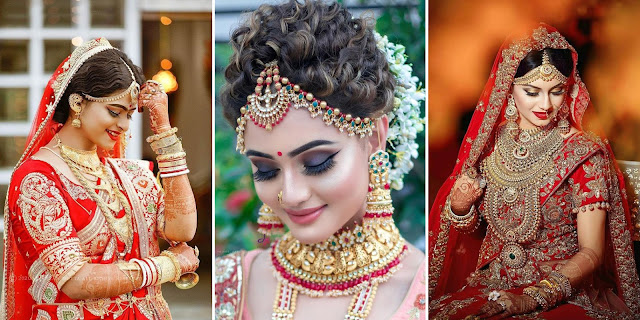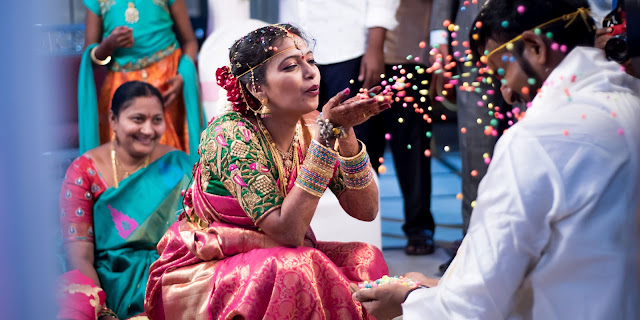Exquisite Indian Wedding Jewellery: Symbolism and Styles.
Exquisite Indian Wedding Jewellery: Symbolism and Styles.
Discover the exquisite world of Indian wedding jewellery, where tradition meets opulence in a mesmerizing fusion of art and culture.

Introduction:
Indian weddings are known for their grandeur, and at the
heart of this opulence lies the captivating world of Indian wedding jewellery.
Steeped in rich traditions and adorned with exquisite craftsmanship, these
adornments play a significant role in the celebration. From the elaborate
necklaces to intricate bangles, each piece tells a story of heritage and love.
In this blog, we delve into the mesmerizing realm of Indian wedding jewellery,
exploring its history, symbolism, types, and the enduring allure that has
captured the imagination of brides and admirers worldwide.
Historical Significance:
Indian wedding jewellery has a deep-rooted history that
dates back centuries. Its origins can be traced to ancient civilizations like
the Indus Valley, where jewellery was an integral part of the culture. Over
time, various dynasties and empires have influenced the designs and styles,
incorporating their distinct artistic flair. From the elaborate gold jewellery
of the Mughals to the intricate temple jewellery of the South, each region has
contributed to the diverse tapestry of Indian bridal adornments.
Symbolism and Rituals:
Indian wedding jewellery carries profound symbolism and is associated with numerous rituals.
The 'Mangalsutra' holds immense importance as a symbol of marital bliss and is worn by married women.

The 'Maang Tikka' adorns the bride's forehead, symbolizing auspiciousness and wisdom.

The 'Nath' (nose ring) is a symbol of fertility and beauty. Each piece serves as a visual representation of cultural beliefs and serves to enhance the bride's beauty while warding off evil spirits.

The exchange of rings
during the wedding ceremony symbolizes eternal love and commitment.

Types of Indian Wedding Jewellery:
Indian wedding jewellery encompasses a wide array of styles and designs, reflecting the diversity of the country.
The 'Rani Haar,' a regal necklace that cascades down the chest, exudes elegance and grandeur.

The 'Choker' is a close-fitting necklace that enhances the bride's neckline and complements traditional attire.

'Bangles' are essential adornments, often made of gold or glass, and signify marital status.

'Jhumkas' are intricately designed earrings that sway gracefully, adding a touch of glamour to the bride's ensemble.

Other notable pieces include the 'Bajuband' (armlet)

'Kamarband' (waist belt)

'Payal' (anklets), all of which contribute
to the bride's resplendent appearance.

Exquisite Indian Wedding Jewellery: Symbolism and Styles.
Craftsmanship and Materials:
Indian wedding jewellery is renowned for its exquisite
craftsmanship and attention to detail. Skilled artisans meticulously create
each piece, incorporating techniques such as filigree, meenakari, kundan,
and polki work. Gold, often considered the epitome of wealth and
prosperity, remains the preferred metal, but silver, platinum, and white gold
are also used. Precious gemstones like diamonds, rubies, emeralds, and
sapphires add vibrancy and brilliance to the jewellery. Intricate enamel work
and the use of colorful glass beads are also prominent in certain regional
styles.

Contemporary Trends:
While traditional designs continue to be treasured,
contemporary trends have also made their mark on Indian wedding jewellery.
Fusion designs that blend traditional and modern elements have gained popularity,
appealing to brides who seek a unique expression of their style. Lightweight
jewellery, inspired by international fashion trends, has emerged as a practical
choice for today's brides. Moreover, customizable pieces, allowing brides to
personalize their jewellery, have become increasingly sought after.
Conclusion:
Indian wedding jewellery is a testament to the country's
rich cultural heritage and artistic finesse. Its allure lies not only in its
dazzling beauty but also in the stories it carries and the traditions it
upholds. From ancient times to the present day, these magnificent adornments
continue to captivate brides and admirers alike. Whether it's the resplendent
gold, the intricate craftsmanship, or the deep-rooted symbolism, Indian wedding
jewellery remains an integral part of the celebration, embodying the essence of
love, tradition, and timeless beauty.



Comments
Post a Comment